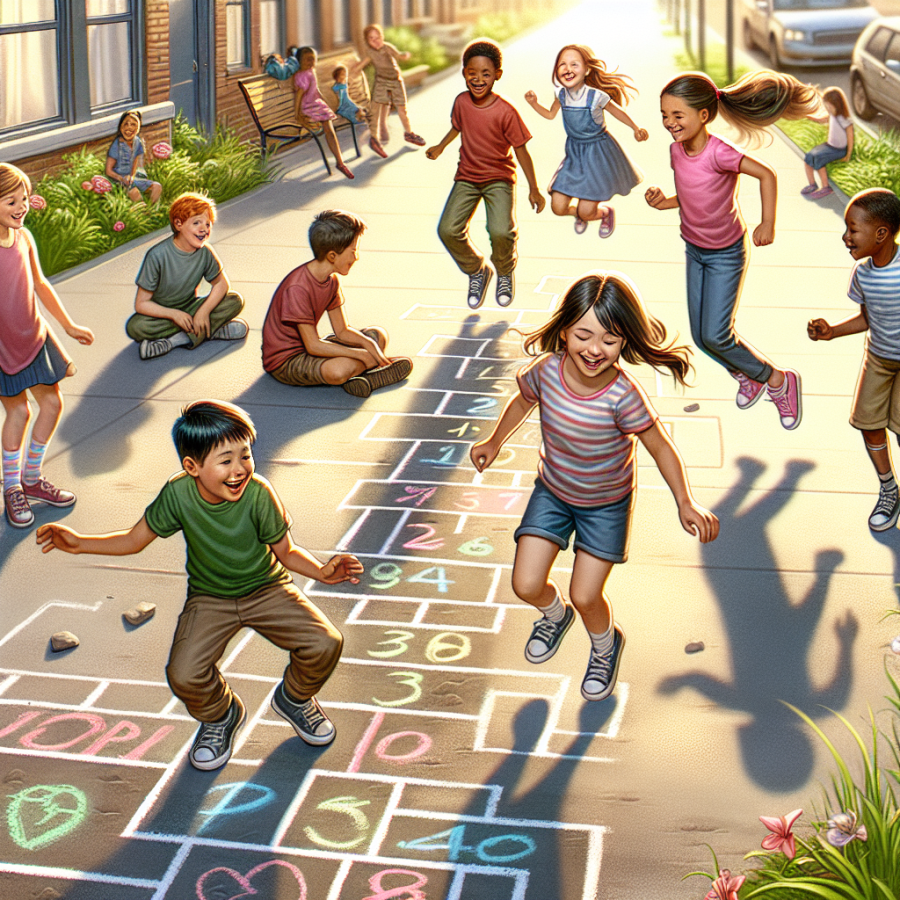Unearthing the Universal Charm of Hopscotch Across Generations
Unearthing the Universal Charm of Hopscotch Across Generations
Hopscotch is a game that transcends age, language, and culture, maintaining a remarkable appeal that captures the hearts of children and sparks nostalgia in adults. Its simplicity is deceptive; it requires no expensive equipment or advanced skills, yet provides a valuable playground exercise that promotes physical agility, balance, and coordination. The game's straightforward nature—a series of squares drawn on the ground where players hop and jump according to set rules—makes it a versatile activity accessible to a wide demographic.
One of the reasons hopscotch maintains its allure across generations lies in the game's adaptability. The hopscotch grid can be drawn with chalk on a sidewalk, etched in the dirt with a stick, or even improvised with leaves or rocks. This adaptability allows the game to be played virtually anywhere, whether it's the urban sprawl of city streets or the expansive backyards of rural homes. Over the years, different cultures have introduced their own variations, which has only added to the rich tapestry of hopscotch's global presence.
Unlike many modern games that often tether children to screens, hopscotch encourages outdoor play and imaginative use of space. Playing hopscotch fosters social interaction among peers, teaching children valuable lessons in turn-taking and fair play. It allows for collective enjoyment, where children can cheer each other on, challenge one another, and engage in healthy competition. The straightforward rules and the physical nature of the game are as appealing today as they were centuries ago.
For adults, hopscotch serves as a portal to their own childhoods. It invokes a sense of nostalgia, reminding them of simpler times where joy could be found in a game etched out on asphalt. It is not uncommon to see adults coaxed into a game by children, jumping into the squares with a youthful gleam in their eyes as they remember the sequences and techniques from their own past. In this way, hopscotch bridges the gap between generations, creating a communal space for shared experiences and memories.
The cognitive benefits of hopscotch should not be underestimated. As a game that requires memory and strategy, it promotes cognitive development in children, fine-tuning skills such as hand-eye coordination and spatial awareness. Players must remember sequences and patterns, enhancing memory and concentration.
Read also:
The Glorious Tradition of Greek Wrestling: A Timeless Sport
The Intergenerational Magic of Hopscotch: More Than Just Child's Play
Hopscotch is a treasured game that has been played by children across the world for generations. It is a game that encourages physical dexterity, balance, and coordination. But its appeal doesn't stop with childhood—it can be a whimsical and enjoyable activity for people of all ages, offering a variety of benefits that transcend generational boundaries.
At its core, the game of Hopscotch is eminently versatile—easily adaptable to different ages, physical abilities, and social situations. In adult circles, for example, it's being embraced as a nostalgic form of low-impact exercise, a way to connect with childhood fun while engaging in a social activity. Adults returning to the hopscotch grid often find themselves rediscovering the joys of simple play, a respite from the demands of adult life.
This intergenerational magic is visible in community initiatives that bring together young and old to play hopscotch. In some neighborhoods, community leaders have organized hopscotch tournaments where grandparents play alongside grandchildren, forging connections rooted in playful competition and shared laughter. These intergenerational games provide a platform for storytelling, where older players share tales of their own childhood games, teaching younger players about the history and variations of the game.
Education is another sphere where the versatility of hopscotch shines. Educators are finding that integrating hopscotch into learning activities helps to engage students of various learning styles. For the young, hopscotch can be a tool for learning numbers, basic arithmetic, or language skills, as each hop can be associated with a sound or word. For older students and adults, hopscotch can be complexified with challenges that require strategic thinking, such as solving puzzles or answering trivia questions at each square.
Moreover, the simplicity of hopscotch means that it can be played virtually anywhere, requiring only a piece of chalk and a small stone. This accessibility makes it an inclusive game, easy to introduce in diverse environments, from the schoolyard to the neighborhood park, to even corporate retreats where teams use it for building morale and group cohesion.
Hopscotch also offers a window into cultural exchange, as variations of the game are found worldwide, with different rules and layouts. This diversity provides an opportunity for people of different backgrounds to learn from one another, celebrating the global nature of this deceptively simple game.
In a world that's increasingly dominated by digital entertainment, the intergenerational magic of hopscotch offers a refreshing counterpoint.




